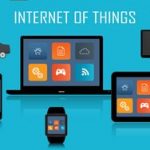Amazon, Google Changing Marketing’s Role Through The Physical Web
by Laurie Sullivan, Staff Writer @lauriesullivan, August 26, 2016

What will be the role of the search marketer when brands finally learn about their customers through data collected by Internet-connected devices?
IoT changes the role that marketers will play. Technology will free up people to do less administrative tasks. If everyone has access to the same tools, such as programmatic platforms and automated rules, it then becomes more about the data that brands collect.
“Think about if Nike knows how their shoes wear with specific customer because they can put a chip in their shoe, it closes the feedback loop through R&D and product and sales teams,” said Ryan Martin, analyst at ABI Research. “What becomes the role of the marketer? The focus turns more toward branding and advertising and how the story gets told.”
The consumer will already know much more about the product and how it applies to them.
Global shipments of smart-home devices with embedded microphones such as Amazon Echo and Google Home will come in at a mere 8.35 million units in 2016, reaching 73.7 million units by 2021, according to ABI Research.
The forecast suggests that more than 120 million voice-enabled devices will ship annually by 2021. Voice control combines speech recognition and natural-language processing. Along with location-based technology, it’s the technology that finds the highest-rated “nearby” Italian restaurant open from 5 p.m. to midnight on Saturdays and Sundays.
Martin, a contributor on the report, says different devices will become contextually aware of their environment. He contributes the growth to the ability to “voice” a question and get answers through these devices.
These devices will refer consumers to restaurants, grocery stores, gas stations, and clothing stores. There is no need for a display. The connected devices will provide feedback and referrals based on location, light, and temperature by creating what Martin calls a mesh network.
Aside from Echo and Home, these microphone-enhanced products range from cameras and doorbells to smart lighting systems. A number of companies like Google, with its learning thermostat Nest, are expanding products to support listening capabilities. The biggest issue the industry sees today — Apple, Amazon, Google and Microsoft all have their own proprietary approach to voice capabilities, according to a report from ABI titled Voice Integration and Control in the Smart Home.
Martin says certain strategies cater to a lower risk and cost of entry to experiment with different optimization ideas because the technology costs less. “It’s not just from a competitive standpoint, but capital intensive to build the infrastructure to compete technically,” he said.
As voice search becomes more pervasive, “built, brought or beamed in” a virtual identity will follow the consumer who will have access through their fingers or voice to information,” Martin said. “Voice will become a very pivotal interface to connect through IoT devices.”
MediaPost.com: Search Marketing Daily
(22)











